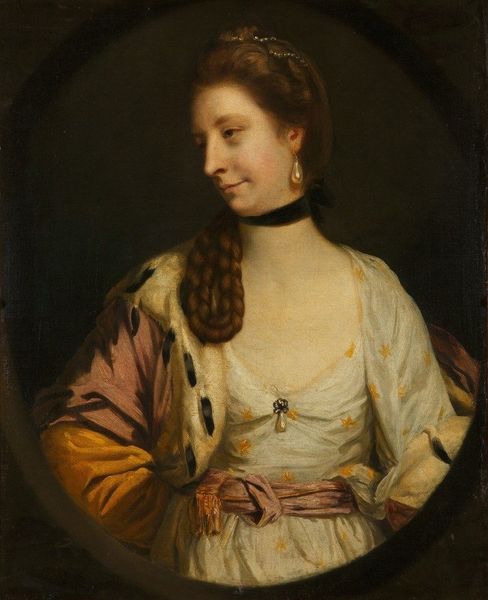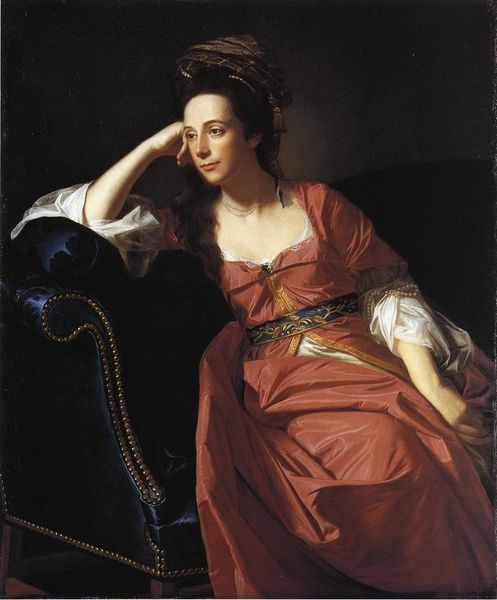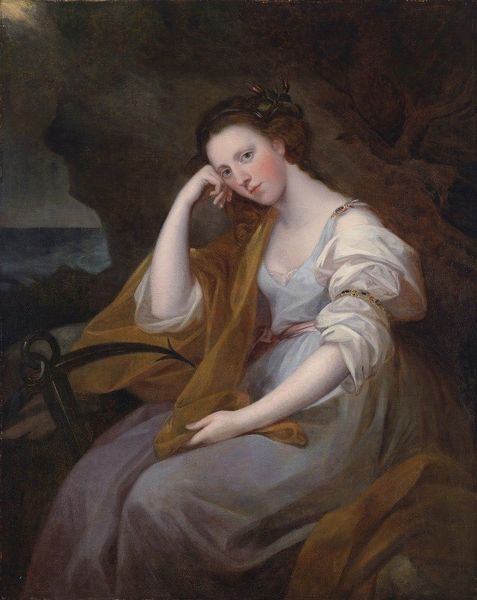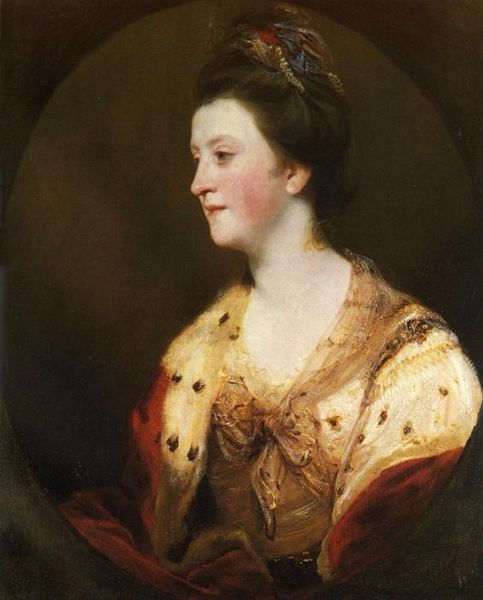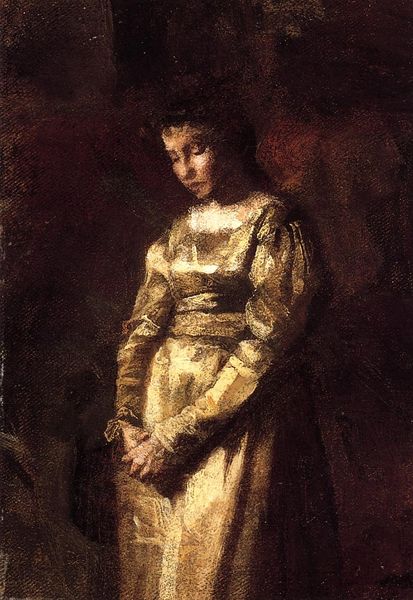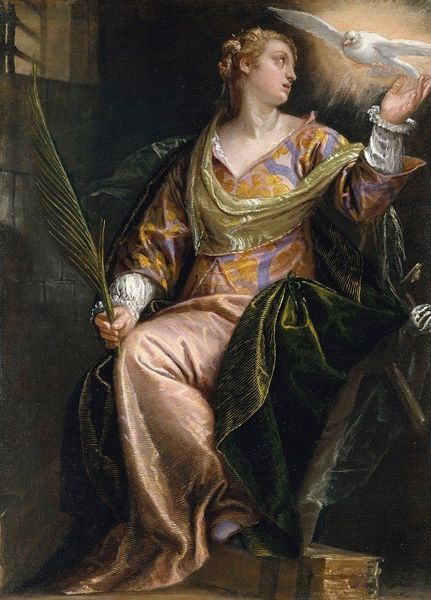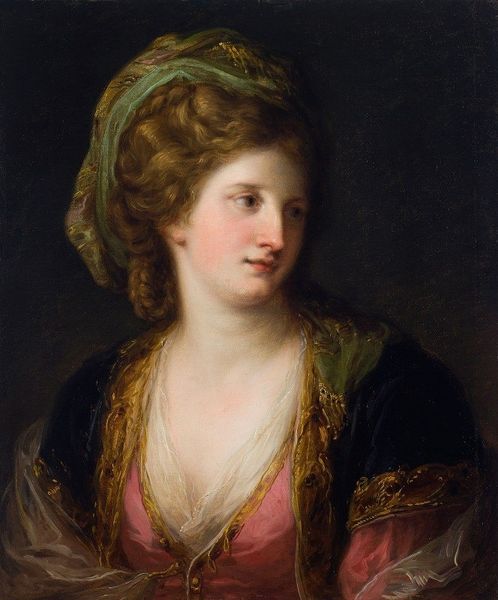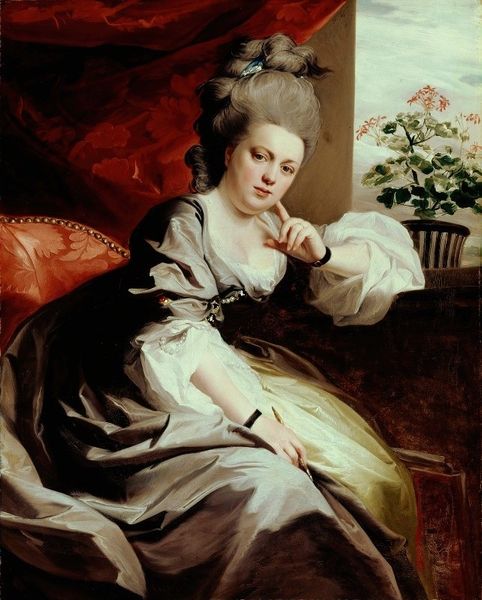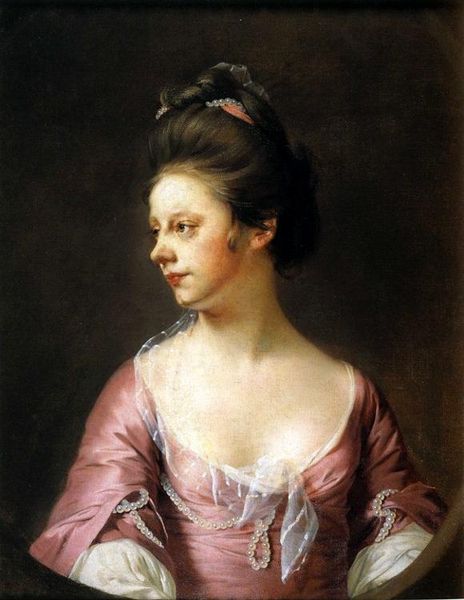
Copyright: Public domain
Curator: Looking at "Emily, Duchess of Leinster" by Joshua Reynolds, created around 1753, I am immediately struck by the opulence. The folds of the Duchess’s dress seem to spill off the canvas, the way light catches on the fabric and jewelry suggesting untold riches. Editor: Absolutely, and focusing on Reynolds' process—the build-up of oil paint, layer upon layer to achieve such depth and luminosity—tells a story of artistic labour meeting aristocratic patronage. We see a clear example of commodity meeting production in 18th-century portraiture. Curator: Precisely. These portraits served a clear purpose in society. Reynolds, as an artist, was consciously shaping the image of the British elite. Notice how he positions the Duchess with a slight air of melancholy and contemplation? He wasn’t just recording a likeness, but crafting a narrative of her character and status. Editor: Consider the materials—oil paint, a relatively new medium allowing for unparalleled realism, versus the Duchess’s dressmaking techniques of this particular historical moment, highlighting different kinds of skill, labour and production within an evolving class system. The way they come together is fascinating. What kind of societal production and expectations underpinned the ability to create portraits such as this? Curator: Good point. The artwork really highlights the growing divide between the luxury afforded to an elite few and the laborious effort to produce it all for them. We see her in this lavish scene with jewelry and gowns while likely ignoring the societal context needed to keep them clothed, sheltered, and bejeweled. Editor: To wrap up, for me, this painting acts as a powerful reminder of the many layers of skilled workmanship and exploitation inherent in producing an image like this. Curator: And for me, it serves as a historical document—offering insights into the complex interplay between art, power, and social representation. It gives us a unique view of not only a woman but also her standing in society.
Comments
No comments
Be the first to comment and join the conversation on the ultimate creative platform.
